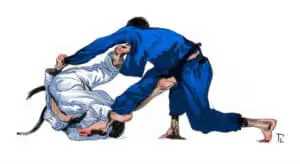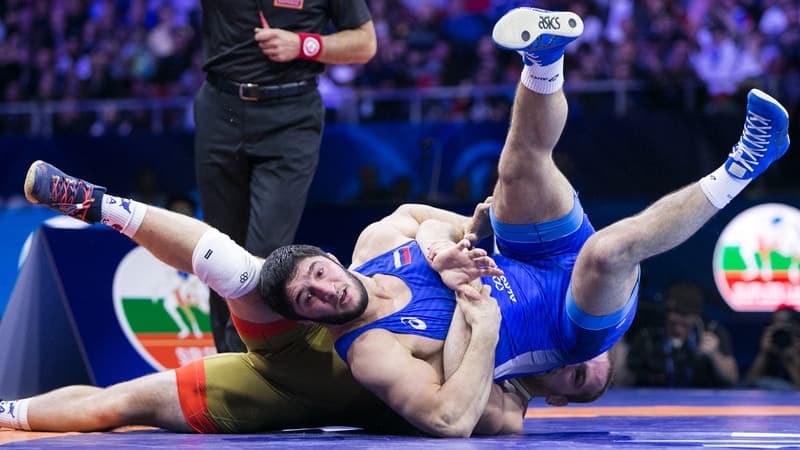
Wrestlers need to be complete athletes; they can’t just rely on a single athletic attribute. Wrestlers require a combination of speed, mobility, power, strength to dominate their competition.
Many wrestlers lift weights in an effort to boost their power and strength. As the deadlift is a popular strength exercise among many athletes more and more wrestlers have started adding it to their routines is this wise? Time to explore the pros and cons of deadlift for wrestling.
Should Wrestlers Deadlift?
Wrestlers should not deadlift. The deadlift is too taxing on the nervous system, negatively affecting wrestling performance. The deadlift has a high chance of injury, wrestling is dangerous enough without compounding injury risks. The deadlift does not carry over to wrestling as well as other exercises.
The Deadlift Is Too Taxing On The Nervous System For Wrestlers
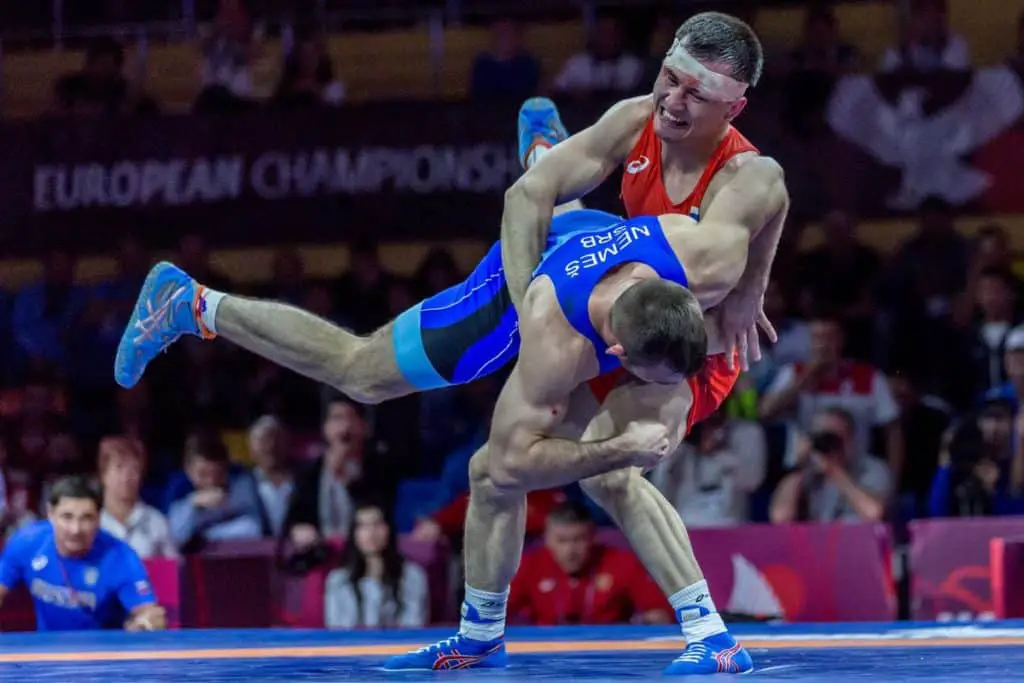
The deadlift causes the most central nervous system fatigue of any strength exercise. A heavy deadlift session can fry an athletes muscles and nervous system for days even a whole week if the intensity is high enough.
Wrestlers need to be on the mat 5 to 6 days a week and wrestling for 1.5 to 2 hours each session. They can’t afford to take time off from their wrestling training because they deadlifted heavy and now their back is sore and they are so fatigued that their conditioning has plummeted.
If you are a wrestler who has experimented with adding the deadlift to your strength routine and then attempted to wrestle hard the next day you will know this was not a wise decision. Your shots and sprawls will be slow, your feet will feel like they are stuck in mud and the mere thought of moving around in your stance will make your back hurt.
The soreness and fatigue induced by the deadlift will result in wrestlers either missing or having ineffective training sessions where they struggle to complete the exercises and execute the techniques. This will lead to either a stalling in progression or a regression in both technical mastery and physical preparedness.
A wrestler can not improve their wrestling capabilities by not being on the mat consistently and performing to the best of their ability.
The Deadlift Is Too Dangerous For Wrestlers
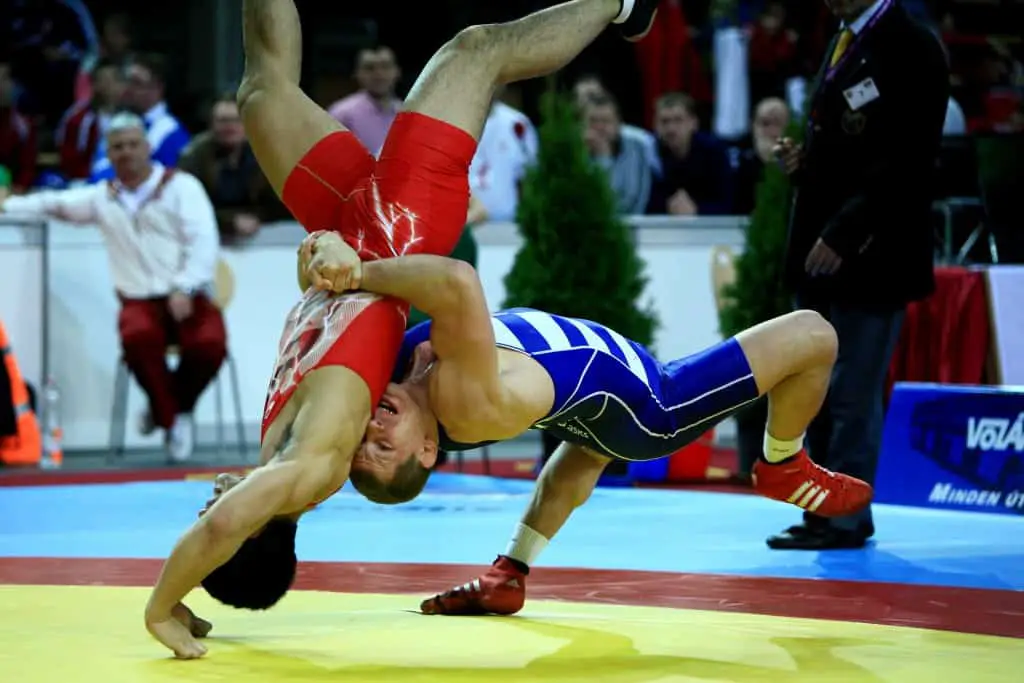
Deadlifting can be dangerous because of the large amount of weight athletes can lift combined with the stress the exercise places on the back. Deadlifts have an injury rate of 1 every 1000 hours of training which is one of the highest of all strength exercises; only the Olympic weightlifting movements are more dangerous.
The most common injuries include back sprains, strains, tendon avulsions and compartment syndromes. Common chronic deadlift injuries include back tendinopathy and stress injuries to the vertebrae.
Wrestling is already a dangerous sport with a high injury rate of 9.6 per 1000 athlete-exposures. Wrestlers who are also susceptible to back injuries do not need to compound their chances of suffering an injury by deadlifting. Especially when the benefits are not significant and there are safer alternative exercises.
It is already a challenge for wrestlers to stay healthy and compete frequently when following their standard wrestling training routine. Adding a dangerous exercise like the deadlift to a wrestler’s training schedule is only going to make it harder for them to complete their wrestling training and compete injury free.
Maximal Strength Is Not Very Important In Wrestling
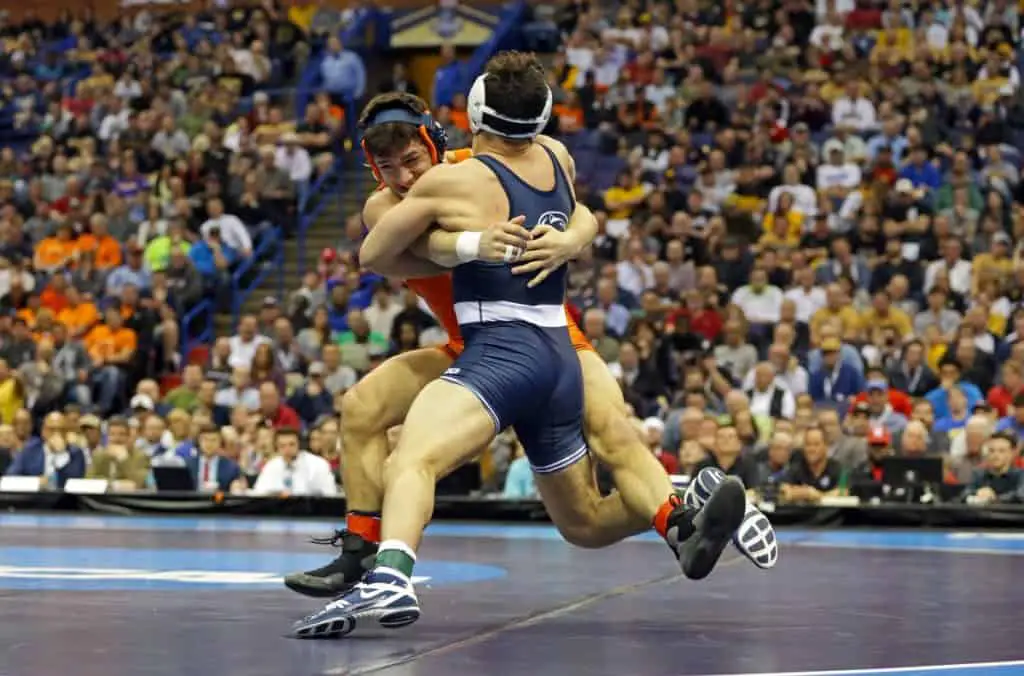
The deadlift is great at building maximal strength. The only problem is that maximal strength is not a major factor in wrestling.
Wrestling is much more focused on speed, power, endurance, mobility and technique than strength. Maximal strength is just not going to help you much on the wrestling mats especially if you don’t possess those other athletic attributes.
If you look at what goes into a takedown in wrestling. It starts off with a wrestler using muscular endurance to maintain and hold the correct position. Then they use mostly technique with some strength to create an opening (example – collar tie snapdown).
Then it is a combination of technique, speed, power with a sprinkling of strength to quickly shoot in on their opponent’s legs and tackle them to the mat utilising a variety of techniques.
If maximal strength is one of the least important attributes for wrestlers to possess, why would they spend their valuable training time on an exercise which is almost exclusively designed to develop this quality?
Wrestlers will see a much greater improvement in their on mat performances if they instead focus on exercises that build the other aforementioned athletic qualities. For example I think the average wrestler would benefit much more by adding 30 minutes of static stretching to improve their flexibility at the end of their wrestling sessions than ever performing a deadlift.
Other Exercises Increase Wrestling Performance More Than The Deadlift

While wrestling is a pulling sport it is just not well suited for wrestlers. As mentioned previously the injury risk, fatigue inducement and the fact it mostly trains maximal strength makes the deadlift not an ideal exercise for wrestlers.
Just because deadlifting is not advised for wrestlers does not mean there aren’t other strength and conditioning exercises that they should be performing regularly.
When it comes to exercise selection for wrestling I like to defer to Dagestan and Ossetia, which are two small republics in Southern Russia which absolutely dominate the world freestyle wrestling, routinely producing world and Olympic champions.
Both of these republics still mostly follow the Soviet methodology for developing wrestling. They do very little weightlifting and when they do lift weights it is usually performed with light loads and implemented in a circuit style training.
Here is a wrestling strength and conditioning circuit training:
Rules:
- 30 seconds each station
- no break between exercises,
- 5 minute break after all exercises completed,
- 4 rounds
- Box Jumps
- Bicep Curls
- Bounding Broad Jumps
- Skipping
- Pull Ups
- Kettlebell Swings – 16kg
- Squat – 60kg
- Medicine Ball Slams
- Throw Wrestling Dummy
- Leg Extension
- Rope Climb
- Power Clean – 50kg
Here Is A Video Of Dagestan’s Freestyle Wrestling Team Performing A Circuit Workout
The most common form of strength exercises performed in Dagestan and Ossetia are pull ups, rope climbs, push ups, sit up variations, bridging exercises and dips. Advanced athletes add weight to these movements for extra challenge.
The way they typically structure their strength training is usually in the last 15 to 30 minutes of their wrestling training they will perform a number of sets of the aforementioned exercises and finish training with static stretching to maintain and improve flexibility.
Some Russian will occasionally use kettlebells or perform some Olympic lifts after training however this is not that common, rope climbs, pull ups, dips and push ups are by far the most popular exercises.
